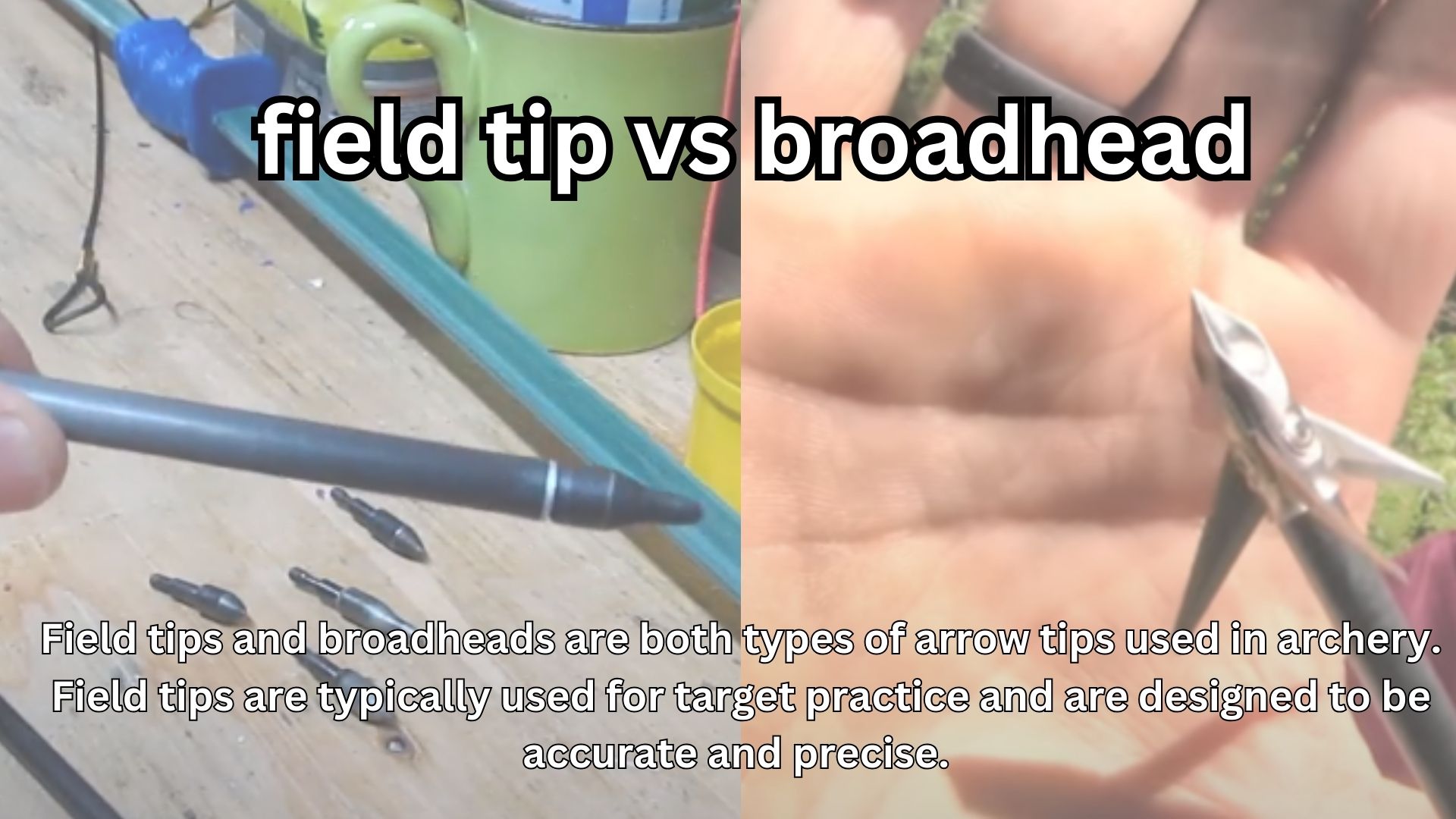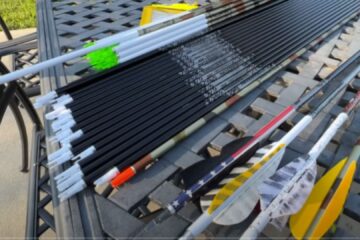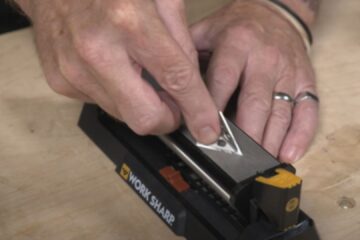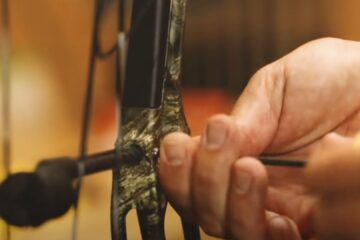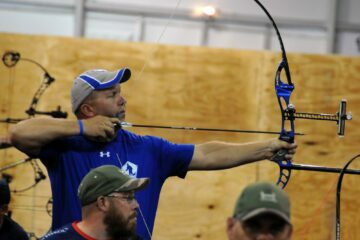Field tips and broadheads are both types of arrow tips used in archery. Field tips are typically used for target practice and are designed to be accurate and precise.
Broadheads, on the other hand, are used for hunting and have sharp blades for maximum penetration.
Understanding The Purpose Of Field Tips And Broadheads
Field tips and broadheads serve different purposes in archery. Field tips are used for target practice because they have a flat shape and don’t cause damage, while broadheads are designed for hunting with their sharp blades. Understanding the differences between the two is essential for any archer.
Field Tip Vs Broadhead:
When it comes to archery and hunting, understanding the purpose of field tips and broadheads is crucial. Field tips and broadheads are arrowheads used to achieve different objectives in different situations. While they both play a vital role in archery, there are key differences and similarities between the two.
In this section, we will explore the introduction to field tips and broadheads, their key differences and similarities, and how to choose the right arrowhead for your needs.
Introduction To Field Tips And Broadheads
Field Tips:
- Designed for practice, target shooting, and general archery purposes.
- Typically have a bullet-shaped point for smooth penetration into targets.
- Do not have sharp blades or cutting edges.
- Available in various weights to match the weight of hunting broadheads.
- Provide accurate flight and consistent performance.
- Ideal for honing your archery skills and familiarizing yourself with your bow.
Broadheads:
Purpose-built for hunting and delivering lethal impact on game animals.
- Feature sharp, fixed or mechanical blades designed to cause damage upon impact.
- Come in different designs, including fixed-blade, replaceable-blade, and mechanical expandable broadheads.
- Require accurate shot placement for maximum effectiveness.
- Ensure the ethical harvest of game animals.
- Available in different cutting diameters and weights to cater to various hunting needs.
Key Differences And Similarities
Key Differences:
- Field tips are primarily used for practice and target shooting, while broadheads are used for hunting.
- Field tips lack cutting blades, while broadheads are equipped with sharp, cutting edges for maximum effect.
- Field tips have a bullet-shaped point, while broadheads have varying blade designs.
- Field tips are typically lighter in weight compared to broadheads.
- Broadheads require accuracy and precise shot placement, while field tips are forgiving to minor errors.
Key Similarities:
- Both field tips and broadheads are designed to be attached to arrows for shooting.
- Both field tips and broadheads come in different weights to match the arrow and bow setup.
- Field tips and broadheads contribute to arrow stabilization and flight.
- Both field tips and broadheads are crucial components of archery and hunting equipment.
Choosing The Right Arrowhead
To choose the right arrowhead, consider the following:
- Purpose: Determine whether you need an arrowhead for practice or hunting.
- Game: Consider the size and type of game you plan to hunt.
- Regulations: Adhere to any legal restrictions or regulations regarding arrowhead types.
- Accuracy: Assess your shooting skills and choose an arrowhead that matches your accuracy level.
- Penetration: Evaluate the cutting diameter and penetration capabilities of different arrowheads.
- Bow Setup: Consider the compatibility of the arrowhead with your bow’s draw weight and arrow spine.
Remember, selecting the appropriate arrowhead depends on your specific needs and requirements. Whether you’re practicing your archery skills or preparing for a hunting expedition, choosing the right arrowhead is essential for optimal performance and success in the field.
Advantages And Disadvantages Of Field Tips
Field tips have advantages and disadvantages compared to broadheads. While field tips are more cost-effective and allow for target practice, broadheads are designed for hunting and offer better accuracy and penetration. However, field tips lack the cutting power and effectiveness of broadheads when it comes to hunting game.
Ultimately, the choice depends on the intended use and individual preferences.
Pros Of Using Field Tips
- More cost-effective: Field tips are generally less expensive than broadheads, making them a budget-friendly option for practice sessions and target shooting.
- Easy to replace: Since field tips are not designed to cause significant damage, they tend to be more durable and easier to replace compared to broadheads. This makes them convenient for extended target practice sessions.
- Safe for target practice: Field tips are specifically designed to be safe for shooting at targets, as they are less likely to cause injury or damage to the target or surrounding objects.
- Accurate flight trajectory: Field tips are usually aerodynamically designed to mimic the flight characteristics of broadheads, ensuring consistent accuracy and predictable flight patterns.
Cons Of Using Field Tips
- Limited hunting effectiveness: While field tips are effective for target practice, they may not perform as well on actual game animals. Their lack of sharp cutting edges can result in inadequate penetration and less lethal shots.
- Less realistic hunting experience: Using field tips for practice may not fully replicate the hunting conditions and scenarios that a hunter may encounter in the field. The absence of the lethal cutting power of broadheads can affect shot placement and accuracy.
- Inadequate penetration on larger game: Field tips may have difficulty penetrating the tough hide, muscle, and bone of larger game animals. This can lead to wounded animals that may escape, requiring additional tracking efforts or resulting in lost game.
Field Tip Performance In Different Hunting Situations
When considering the use of field tips in different hunting situations, it’s important to assess their performance in specific scenarios:
- Small game hunting: Field tips can be effective for hunting smaller game, like rabbits and squirrels, where the focus is on accuracy rather than penetration. Their lower likelihood of over-penetration helps prevent excessive damage to the meat of the game.
- Practice and training: Field tips are ideal for regular practice sessions and target shooting. They allow hunters to refine their shooting skills, maintain accuracy, and minimize costs associated with replacing broadheads.
- Hunting regulations: In some areas, hunting regulations restrict the use of broadheads, especially during certain hunting seasons or in certain regions. In such cases, field tips provide a suitable alternative and ensure compliance with local hunting regulations.
While field tips offer advantages such as cost-effectiveness, ease of replacement, safety for target practice, and accurate flight trajectory, they may have limitations in terms of hunting effectiveness, realistic hunting experience, and adequate penetration on larger game. Understanding the field tip’s performance in different hunting situations is essential for hunters to make informed decisions based on their specific hunting needs and compliance with hunting regulations.
Advantages And Disadvantages Of Broadheads
Broadheads offer the advantage of greater accuracy and penetration when used for hunting, but they also have the disadvantage of being potentially more dangerous and causing more damage to the target. When comparing field tips and broadheads, it is essential to consider these pros and cons.
Broadheads are a popular choice among hunters for their effectiveness and versatility. They offer unique advantages that make them indispensable in certain hunting situations. However, there are also some drawbacks to using broadheads that hunters should be aware of.
In this section, we will explore the pros and cons of using broadheads, as well as their performance in different hunting scenarios.
Pros Of Using Broadheads:
- Exceptional cutting ability: Broadheads are known for their wide cutting surface area, which enables them to deliver devastating wounds to the target. This enhanced cutting ability increases the chances of a quick and ethical kill.
- Greater blood loss: The wider cutting diameter of broadheads leads to increased blood loss, making it easier for hunters to track wounded game. This can significantly reduce the risk of animals getting lost and helps ensure a successful hunt.
- Versatility: Broadheads come in various types, such as fixed-blade, mechanical, and hybrid. This versatility allows hunters to choose the best type based on their specific hunting needs and preferences. Additionally, it gives them the flexibility to adapt to different target species and situations.
- Penetration power: Broadheads are designed to penetrate animal hide and muscle, ensuring deep wounds that can incapacitate the animal quickly. This is particularly advantageous when hunting larger game that requires maximum penetration power.
Cons Of Using Broadheads:
- Reduced flight accuracy: Compared to field tips, broadheads can be less accurate during flight due to their larger surface area, weight distribution, and drag. It is crucial for hunters to practice extensively with their broadheads to compensate for any deviations in flight and maintain accuracy.
- Cost: Broadheads can be relatively expensive compared to field tips. Given their one-time use, hunters need to replace them regularly, adding to the overall cost of hunting. However, considering their effectiveness and benefits, many hunters deem the investment worthwhile.
- Mechanical failures: Mechanical broadheads, in particular, have moving parts that can occasionally malfunction or fail to deploy properly upon impact. This can result in less effective wounds and potential game loss. It is crucial for hunters to use high-quality broadheads and check them thoroughly before each hunt.
Broadhead Performance In Different Hunting Situations:
- Big game hunting: Broadheads excel in hunting larger animals such as deer, elk, and bear due to their cutting ability and penetration power. They are designed to deliver devastating wounds and ensure a quick and humane kill, making them ideal for big game hunting scenarios.
- Thick vegetation: When hunting in dense vegetation areas, broadheads can prove advantageous. Their wider cutting diameter allows them to penetrate through thick foliage and still deliver effective shots.
- Long-range shots: For long-range shots, field tips might be a better choice as they tend to offer more accuracy and stability during flight. However, some modern mechanical broadheads are designed to fly similar to field tips, making them suitable for long-range hunting as well.
Broadheads offer significant advantages such as exceptional cutting ability, greater blood loss, versatility, and penetration power. However, they also have drawbacks related to flight accuracy, cost, and occasional mechanical failures. Understanding these pros and cons, along with considering the hunting situation, can help hunters make an informed decision when choosing between field tips and broadheads for their next expedition.
Remember, practice and proficiency are essential with any hunting equipment to ensure the most effective shots.
Field Tip Vs Broadhead: Accuracy And Precision Comparison
Field tips and broadheads are both used in archery, but when it comes to accuracy and precision, they differ. Field tips are known for their predictability and consistency, while broadheads offer the penetrating power needed for hunting.
When it comes to archery and bowhunting, accuracy and precision are vital. Choosing the right arrowhead for your intended use can greatly impact your shooting performance. In this section, we will compare the accuracy and precision of field tips and broadheads, highlighting the factors that affect their effectiveness.
Through case studies and real-life examples, we will delve deeper into understanding the pros and cons of each type.
Factors Affecting Accuracy With Field Tips:
- Weight distribution: Field tips are designed to evenly distribute weight along the arrow shaft, promoting better stability and minimizing flight inconsistencies.
- Aerodynamics: The streamlined shape of field tips reduces wind resistance, allowing for a smoother and more predictable flight path.
- Point of impact: Accurate shooting with field tips heavily relies on consistently hitting the same spot, ensuring optimal results with each shot.
- Spine consistency: Arrows with consistent spine stiffness can enhance accuracy, as they react consistently to the forces applied during the shot.
- Proper bow tuning: Ensuring that your bow is properly tuned to match your arrow setup significantly contributes to arrow accuracy.
Factors Affecting Accuracy With Broadheads:
- Blade alignment: Achieving proper alignment of the broadhead blades enhances accuracy by ensuring that the arrow flies straight and true.
- Mechanical integrity: Broadheads with well-constructed components and tight tolerances perform more predictably, minimizing variation in flight.
- Blade selection: Different broadhead designs, such as fixed blade or mechanical, offer varying levels of accuracy and precision.
- Weight compatibility: Selecting a broadhead that matches the weight of your field point arrow setup helps maintain consistent arrow flight characteristics.
- Fletching considerations: The size and shape of your fletching can impact how a broadhead behaves in flight, either stabilizing or destabilizing the arrow.
Case Studies And Real-Life Examples:
Case Study: Archery Competition
- Archers using field tips consistently achieved tight groupings, resulting in higher scores due to their arrow’s predictable flight path.
- Those using broadheads experienced slightly larger groupings, attributed to the additional factors affecting the broadhead’s flight characteristics.
Real-life Example: Hunting Game
- Field tips excel in hunting scenarios where precision and accuracy are crucial for ethical shots, delivering a reliable and effective result.
- Broadheads, on the other hand, offer greater cutting power and internal damage, providing superior stopping power when hunting larger game.
Both field tips and broadheads have their unique characteristics that affect accuracy and precision. Field tips tend to offer more consistent flight and better grouping, while broadheads provide increased cutting power for hunting applications. By understanding the factors that influence accuracy and precision with each arrowhead type, you can make an informed decision based on your specific needs and shooting requirements.
Field Tip Vs Broadhead: Penetration And Wounding Potential
Field tips and broadheads are compared in terms of penetration and wounding potential, revealing their differences in the hunting world. While field tips are commonly used for practice, broadheads offer superior penetration and increased chances of effectively taking down game in hunting situations.
If you’re an archer, you understand the importance of choosing the right arrow and tip for your hunting needs. When it comes to penetration and wounding potential, the choice between a field tip and a broadhead can greatly impact your hunting success.
In this section, we will explore the penetration capabilities of field tips and broadheads, and their impact on ethical and humane hunting.
Penetration Capabilities Of Field Tips:
- Field tips are designed to replicate the flight characteristics of broadheads without causing much damage to the target. They are primarily used for practice and are not meant for hunting.
- Their streamlined shape allows field tips to slice through the air with minimal resistance, resulting in better accuracy and longer distances. However, this streamlined design also reduces their penetration capabilities compared to broadheads.
- Field tips often feature sharp points that can pierce the target. However, due to their lack of cutting edges, they tend to make narrower entry wounds and may not penetrate as deeply as broadheads.
- The primary purpose of field tips is to practice shooting mechanics and improve accuracy. They are not intended to create significant damage or cause expansive wound channels.
Penetration Capabilities Of Broadheads:
- Broadheads, on the other hand, are specifically designed for hunting and have cutting edges that can cause substantial damage to the target. They come in various styles, including fixed-blade and mechanical (expandable) broadheads.
- Fixed-blade broadheads have multiple sharp blades that create wider wound channels upon entry, promoting better blood trails and increasing the chances of a clean and effective kill.
- Mechanical broadheads deploy their blades upon impact, expanding the cutting surface for enhanced penetration and greater tissue damage. However, the mechanical system may sometimes fail to function properly, resulting in reduced penetration and an inefficient kill.
- Broadheads are heavier and generally have a bigger profile compared to field tips, which can affect arrow flight trajectory, accuracy, and range. However, their cutting abilities compensate for this drawback and allow for better penetration.
Impact On Ethical And Humane Hunting:
As responsible hunters, it is crucial to consider the ethical and humane aspects of the equipment we use. Broadheads, with their improved penetration and wounding potential, can deliver a quick and humane kill, minimizing the animal’s suffering.
- Field tips may not provide the same level of effectiveness in taking down game animals swiftly and efficiently. Their limited penetration and narrower wound channels may result in a slower kill, potentially prolonging the suffering of the animal.
- While field tips are useful for practice and honing your shooting skills, it is essential to switch to broadheads when hunting to ensure a humane and ethical harvest.
The penetration capabilities and wounding potential of field tips and broadheads differ significantly. Field tips are suitable for practice and accuracy improvement, but when it comes to ethical and humane hunting, broadheads are the preferred choice due to their superior penetration, wider wound channels, and increased likelihood of a clean and efficient kill.
Field Tip Vs Broadhead: Effectiveness On Different Game Animals
Field tips and broadheads are both effective for hunting different game animals. Field tips are commonly used for practice and target shooting, while broadheads are preferred for hunting and have more killing power. Different animals may require different types of ammo for the best results.
When it comes to hunting game animals, choosing the right arrowhead can greatly influence your success. Two common types of arrowheads are field tips and broadheads. Each has its own advantages and limitations when it comes to effectiveness on various game animals.
In this section, we will discuss the usage and effectiveness of field tips and broadheads on different game animals.
Usage And Effectiveness Of Field Tips On Various Game Animals:
Small Game:
- Field tips are ideal for hunting small game animals like squirrels and rabbits.
Explanation: The sharp point of field tips provides accurate and humane kills on relatively smaller animals.
Medium Game:
- Field tips are also effective for hunting medium-sized game animals such as deer and antelope.
Explanation: They can penetrate the hide and deliver enough force to take down these animals, ensuring a clean and ethical kill.
Large Game:
- Field tips are less effective when it comes to hunting large game animals like elk and moose.
Explanation: The smaller cutting diameter and lack of blade deployment of field tips may result in inadequate penetration and less effective kills.
Usage And Effectiveness Of Broadheads On Various Game Animals:
Small Game:
- Broadheads can be used for hunting small game animals, but the chances of arrow damage and excessive trauma are higher compared to field tips.
Explanation: The wider cutting diameter of broadheads increases the risk of damaging the vital organs of smaller animals.
Medium Game:
- Broadheads are commonly used for hunting medium-sized game animals, providing enough penetration and causing significant tissue damage.
Explanation: The larger cutting diameter and blade deployment of broadheads result in more effective kills on medium-sized animals like deer and boars.
Large Game:
- Broadheads are highly effective when hunting large game animals, delivering maximum penetration and causing extensive damage to vital organs.
Explanation: The larger cutting diameter and multiple blades of broadheads ensure deep penetration and a higher chance of a clean and ethical kill on animals like elk and bears.
The choice between field tips and broadheads depends on the game animal being hunted. Field tips are suitable for small and medium-sized game animals, while broadheads excel in hunting medium to large game animals. Understanding the usage and effectiveness of these arrowheads will aid in making the right choice for a successful hunting experience.
Tips For Selecting The Right Arrowhead For Your Hunting Needs
Selecting the right arrowhead is crucial for successful hunting. Consider the choice between field tips and broadheads based on your specific hunting needs. Choose wisely to enhance your shooting accuracy and ensure a clean kill.
When it comes to selecting the right arrowhead for your hunting needs, there are a few important considerations to keep in mind. The choice between field tips and broadheads can significantly impact your hunting experience. We’ll explore the factors you should consider when deciding which type of arrowhead to use.
Whether you’re a seasoned hunter or just starting out, these expert recommendations and tips will help you make an informed decision. So, let’s dive in!
Considerations For Choosing Field Tips Or Broadheads:
- Purpose: Determine the purpose of your hunting trip. Are you aiming for target practice or planning to take down game? This will influence your arrowhead choice.
- Regulations: Familiarize yourself with hunting regulations in your area. Some regions have restrictions on the type of arrowheads permitted for specific game, so make sure you comply with these rules.
- Accuracy: Consider your shooting proficiency and the level of accuracy you can achieve with different arrowheads. Certain arrowheads, such as field tips, are designed for better precision during target practice.
- Penetration: Broadheads are known for their superior penetrating power, making them the ideal choice for hunting large game. If you’re targeting larger animals, choosing the right broadhead is crucial.
- Damage: Think about the type of damage you want to inflict on your target. Field tips are designed for minimal tissue damage, making them ideal for small game hunting or when you want to preserve the meat.
- Distance: Evaluate the shooting distance you’re comfortable with. Field tips are generally more accurate at longer distances, while broadheads are better suited for close-quarters hunting.
Expert Recommendations And Tips:
- Test and Practice: Before heading out on a hunting trip, test different arrowheads and practice with them. This will help you understand the trajectory, accuracy, and penetration of each type.
- Match Your Bow: Ensure that the arrowhead you choose matches the draw weight, draw length, and arrow spine of your bow. Using the wrong arrowhead can result in poor performance and accuracy issues.
- Weight Considerations: Pay attention to the weight of the arrowhead. Broadheads are typically heavier than field tips. Adjusting your bow setup accordingly is essential to maintain balance and accuracy.
- Hunting Conditions: Take into account the conditions you’ll be hunting in. If you’re hunting in dense foliage or brush, broadheads may be more prone to getting stuck or deflected, whereas field tips can navigate these obstacles better.
- Personal Preference: Ultimately, consider your personal preferences and hunting style. Some hunters have a preferred arrowhead type based on their comfort and previous success. Listen to your instincts.
So, whether you decide to go with field tips or broadheads for your next hunting adventure, remember to carefully consider factors such as purpose, regulations, accuracy, penetration, damage, and shooting distance. By following expert recommendations and practicing with different arrowheads, you can make an informed decision that aligns with your hunting style and preferences.
Happy hunting!
Frequently Asked Questions Of Field Tip Vs Broadhead
Do Field Tips Shoot The Same As Broadheads?
Field tips and broadheads do not shoot exactly the same due to their design and weight differences.
Are Broadheads More Accurate Than Field Points?
Broadheads are not necessarily more accurate than field points. Accuracy depends on a hunter’s skill and equipment setup.
Can You Use Field Tips For Hunting?
Yes, you can use field tips for hunting.
What Is A Field Tip Used For?
A field tip is used for practicing archery and is designed to attach to the end of an arrow.
Conclusion
Ultimately, the choice between using a field tip or a broadhead comes down to personal preference and hunting style. Both have their advantages and disadvantages, and each hunter must weigh these factors based on their specific needs and goals. Field tips are great for practice and target shooting, as they are more forgiving and less likely to damage arrows or targets.
On the other hand, broadheads are designed for hunting and offer better penetration and damage to the target. They are more effective in bringing down big game animals. It is crucial to consider factors such as accuracy, power, and ethical considerations before making a final decision.
Whether you choose a field tip or a broadhead, it is essential to practice and become proficient with your chosen tool to ensure an ethical and successful hunting experience. Happy hunting!

